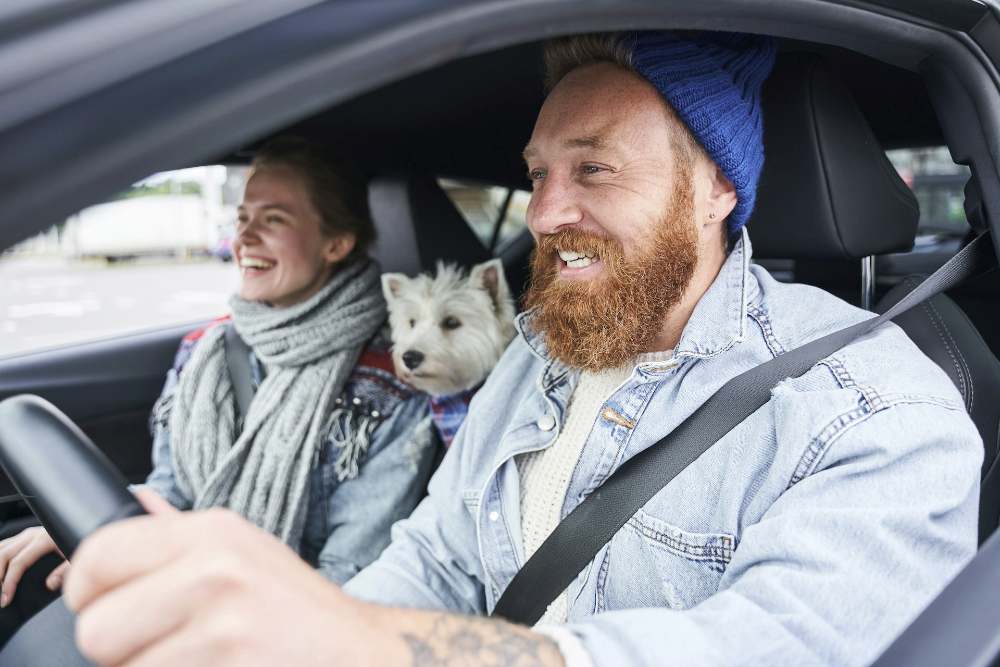How Pets May Impact Your Focus Behind the Wheel
Many of us love to take our furry friends along for the ride, whether it’s a quick trip to the store or a long road trip. However, while pets can be excellent companions, they can also pose a significant distraction while driving.
The Distraction Factor
Pets, particularly dogs, can be incredibly distracting to drivers for several reasons. Firstly, they often seek attention, whether it’s through playful behavior, wanting to sit on your lap, or simply by being curious about their surroundings. This can divert your focus away from the road and onto your pet, increasing the risk of an accident.
Furthermore, pets may exhibit unpredictable behavior while in the car. They might suddenly jump onto your lap, attempt to climb into the front seat, or even bark or whine, all of which can startle or distract the driver. Even a momentary distraction can have serious consequences when operating a vehicle.
Additionally, pets may require your assistance or attention while driving. For example, you might need to reach into the backseat to comfort a nervous pet, adjust their harness or seatbelt, or retrieve a toy or treat to keep them occupied. These actions can take your hands off the wheel and your eyes off the road, further increasing the risk of an accident.
Safety Concerns:
Beyond the risk of distraction, driving with unrestrained pets can pose safety hazards to both the animals and the occupants of the vehicle. In the event of a sudden stop or collision, an unrestrained pet can become a projectile, potentially causing injury to themselves and others in the car.
Moreover, pets can interfere with the driver’s ability to operate the vehicle safely. They may obstruct your view of the road or mirrors, hindering your ability to check blind spots or react to hazards effectively. In some cases, pets may even inadvertently interfere with the vehicle’s controls, such as by stepping on pedals or pressing buttons.
If you end up in a car accident, contact a Buffalo car accident attorney for legal assistance.
Tips for Safe Driving with Pets:
While pets can be distracting passengers, there are steps you can take to mitigate these risks and ensure a safer driving experience for everyone involved:
- Secure your pet: Invest in a quality pet restraint system, such as a harness, seatbelt, or crate, to keep your pet secure during car rides. This will not only prevent them from roaming freely and causing distractions but also protect them in the event of a sudden stop or collision.
- Plan ahead: Before hitting the road, make sure your pet is comfortable and has everything they need for the journey, such as water, food, toys, and a comfortable resting area. This will help keep them content and less likely to act out or demand your attention while driving.
- Take frequent breaks: If you’re embarking on a long road trip with your pet, plan to take regular breaks to give them the opportunity to stretch their legs, use the bathroom, and burn off excess energy. This will help prevent restlessness and reduce the likelihood of disruptive behavior while driving.
- Minimize distractions: Avoid engaging with your pet while driving, even if they’re seeking attention. Instead, focus on the road and save interaction with your pet for times when the vehicle is parked or during designated rest stops.
- Train your pet: Teach your pet to associate car rides with calm and relaxed behavior through positive reinforcement training. This may involve gradually introducing them to car travel, rewarding calm behavior, and providing plenty of praise and treats for good behavior.
Conclusion:
While pets can be wonderful companions, they can also pose significant distractions while driving. By recognizing the potential risks and taking proactive measures to minimize distractions and ensure the safety of both you and your pet, you can enjoy the company of your furry friends on the road while still prioritizing safety behind the wheel. Remember, when it comes to driving with pets, safety should always come first.

